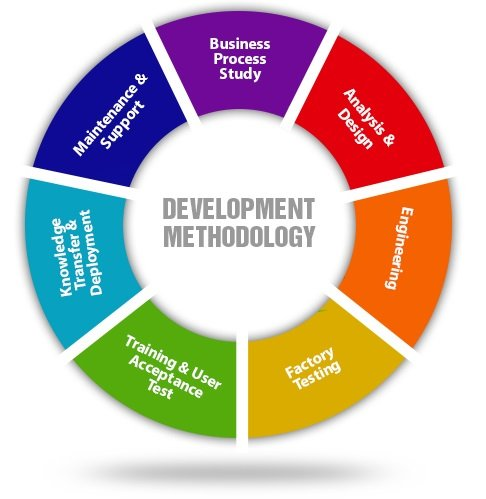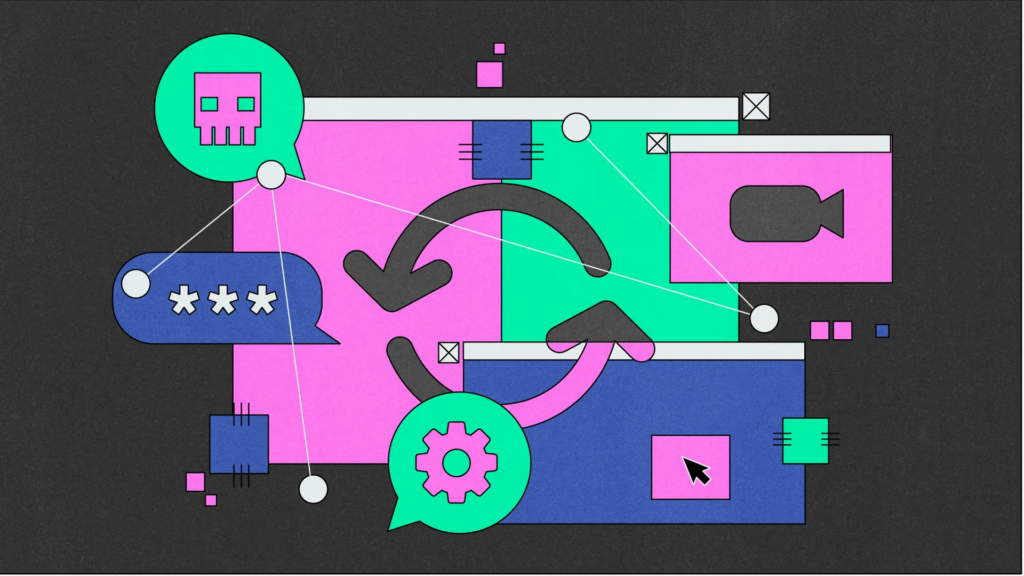SDLC stands for Software Development Life Cycle, which is a process followed by software development teams to design, develop, test, and deploy high-quality software products.
The Software Development Life Cycle (SDLC ) process involves several stages, including planning, analysis, design, implementation, testing, and maintenance. Each stage of the process has its own objectives, deliverables, and documentation requirements.

Here is an overview of each stage of the SDLC process:
Stage-1: Planning Phase – Software Development Life Cycle
In this stage, the software development team defines the project scope, objectives, and requirements, and creates a plan for how to achieve them. The planning stage is the first phase of the Software Development Life Cycle (SDLC process). In this stage, the software development team defines the project scope, objectives, and requirements, and creates a plan for how to achieve them. Here are some of the key activities that take place during the planning stage:
- Project initiation: In this step, the software development team identifies the need for the software project and defines the project’s objectives and goals.
- Project scope: The software development team defines the scope of the project, including what the software should do, the target audience, and any limitations.
- Requirements gathering: The software development team gathers and documents the requirements for the software. This may involve interviewing stakeholders, analyzing existing processes, and identifying any regulatory or compliance requirements.
- Resource planning: The software development team determines the resources needed to complete the project, including personnel, hardware, and software.
- Risk assessment: The software development team identifies and assesses potential risks associated with the project, such as technical challenges, time constraints, or budgetary constraints.
- Project timeline: The software development team creates a timeline for the project that includes key milestones, deadlines, and deliverables.
- Project budget: The software development team determines the budget for the project, including the costs associated with personnel, equipment, and software.
The planning stage is critical to the success of the software development project. By carefully defining the project scope, requirements, and resources, and identifying potential risks and challenges, the software development team can create a solid foundation for the rest of the Software Development Life Cycle SDLC process.

Stage-2: Anlaysis Phase – Software Development Life Cycle
Analysis: In this stage, the team conducts a detailed analysis of the requirements, processes, and workflows involved in the software development project. They also identify any potential risks and challenges that may arise during the development process.
The analysis stage is the second phase of the Software Development Life Cycle (SDLC process). In this stage, the software development team conducts a detailed analysis of the requirements, processes, and workflows involved in the software development project. Here are some of the key activities that take place during the analysis stage:
- Requirements analysis: The software development team reviews and refines the requirements gathered in the planning stage. They identify any gaps or inconsistencies in the requirements and work with stakeholders to clarify them.
- Business process modeling: The software development team models the current business processes and identifies areas where the software can streamline or automate processes.
- Data modeling: The software development team designs the data model for the software, identifying the data entities and their relationships.
- User interface design: The software development team designs the user interface for the software, considering factors such as usability, accessibility, and user experience.
- Prototyping: The software development team creates prototypes or mockups of the software to test and refine the design and functionality.
- Feasibility analysis: The software development team assesses the technical, economic, and operational feasibility of the software project, taking into account factors such as the available resources, budget, and time constraints.
- Documentation: The software development team documents the results of the analysis stage, including the refined requirements, business process models, data models, user interface designs, and feasibility analysis.
The analysis stage is critical to the success of the software development project. By thoroughly analyzing the requirements, processes, and workflows involved in the project, the software development team can identify any potential issues and design a software solution that meets the needs of the users and stakeholders.
Stage-3: Design Phase – Software Development Life Cycle
In this stage, the team designs the software architecture, user interface, and database schema. They also create detailed technical specifications that will guide the implementation phase.
The design stage is the third phase of the Software Development Life Cycle (SDLC process). In this stage, the software development team designs the software architecture, user interface, and database schema. Here are some of the key activities that take place during the design stage:
- System architecture: The software development team designs the system architecture, including the hardware and software components, network topology, and communication protocols.
- Database design: The software development team designs the database schema, including the tables, relationships, and constraints.
- User interface design: The software development team designs the user interface for the software, including the layout, navigation, and functionality.
- Application programming interface (API) design: The software development team designs the API for the software, including the endpoints, methods, and data formats.
- Security design: The software development team designs the security features for the software, including user authentication and authorization, encryption, and access control.
- Error handling and recovery: The software development team designs the error handling and recovery mechanisms for the software, including how to handle and report errors and how to recover from system failures.
- Documentation: The software development team documents the design of the software, including the system architecture, database schema, user interface design, API design, security design, and error handling and recovery mechanisms.
The design stage is critical to the success of the software development project. By carefully designing the software architecture, user interface, and database schema, and considering security, error handling, and recovery, the software development team can create a solid foundation for the implementation and testing phases of the Software Development Life Cycle SDLC process.
Stage-4: Implementation Phase – Software Development Life Cycle
In this stage, the team begins to write and code the software according to the design specifications. They also perform unit testing to ensure that the code is functioning properly.
The implementation stage is the fourth phase of the Software Development Life Cycle (SDLC process). In this stage, the software development team starts to develop the software based on the design specifications. Here are some of the key activities that take place during the implementation stage:
- Coding: The software development team writes the code for the software using the chosen programming language and development tools.
- Database implementation: The software development team implements the database schema and populates it with sample data for testing.
- Integration: The software development team integrates the software components, including the user interface, database, and API.
- Testing: The software development team tests the software to ensure that it meets the requirements and specifications, including functionality, usability, and performance.
- Debugging: The software development team identifies and fixes any errors or bugs that are discovered during testing.
- Documentation: The software development team documents the implementation process, including the coding, database implementation, integration, testing, and debugging.
- Deployment: The software development team deploys the software to the production environment, making it available to users.
The implementation stage is a critical phase of the SDLC process. It involves actually building the software and making sure that it works as intended. By carefully coding the software, testing it thoroughly, and fixing any bugs that are discovered, the software development team can ensure that the software meets the requirements and specifications that were defined in the earlier stages of the Software Development Life Cycle SDLC process.

Stage-5: Testing Phase – Software Development Life Cycle
In this stage, the team tests the software to identify any defects or issues that need to be resolved. They also perform user acceptance testing to ensure that the software meets the requirements and is user-friendly.
The testing stage is the fifth phase of the Software Development Life Cycle (SDLC process). In this stage, the software development team tests the software to ensure that it works as intended and meets the requirements and specifications. Here are some of the key activities that take place during the testing stage:
- Test planning: The software development team develops a test plan that outlines the testing objectives, test cases, test data, and test environment.
- Test execution: The software development team executes the test cases and records the results, including any defects or bugs that are discovered.
- Defect tracking: The software development team tracks the defects or bugs that are discovered during testing, assigning them to the appropriate team members and tracking their status.
- Regression testing: The software development team performs regression testing to ensure that changes or fixes made to the software do not introduce new defects or issues.
- Acceptance testing: The software development team performs acceptance testing to ensure that the software meets the requirements and specifications defined by the stakeholders.
- Performance testing: The software development team performs performance testing to ensure that the software meets the performance requirements, such as response time, throughput, and scalability.
- Documentation: The software development team documents the testing process, including the test plan, test cases, test results, defects, and fixes.
The testing stage is critical to the success of the Software Development Life Cycle project. By thoroughly testing the software, the software development team can identify and fix any defects or bugs before the software is released to users, ensuring that it meets the requirements and specifications and is of high quality.

Stage-6: Maintenance Phase – Software Development Life Cycle
In this stage, the team provides ongoing support and maintenance for the software to ensure that it continues to function properly and meets the changing needs of the users.
The maintenance stage is the final phase of the Software Development Life Cycle (SDLC process). In this stage, the software development team maintains and updates the software to ensure that it continues to meet the changing needs of the users and the organization. Here are some of the key activities that take place during the maintenance stage:
- Monitoring: The software development team monitors the software to ensure that it is running smoothly and to identify any issues or problems.
- Bug fixing: The software development team fixes any defects or bugs that are discovered in the software during the monitoring process.
- Enhancements: The software development team adds new features or functionality to the software to meet the changing needs of the users and the organization.
- Upgrades: The software development team upgrades the software to take advantage of new technologies or to address security or performance issues.
- Documentation: The software development team updates the documentation to reflect any changes or updates to the software.
- User support: The Software Development Life Cycle team provides user support, including training, troubleshooting, and technical assistance.
The maintenance stage is important to ensure the long-term success of the software. By regularly monitoring and updating the software, the software development team can ensure that it continues to meet the changing needs of the users and the organization, and that it remains reliable, secure, and high-quality.





